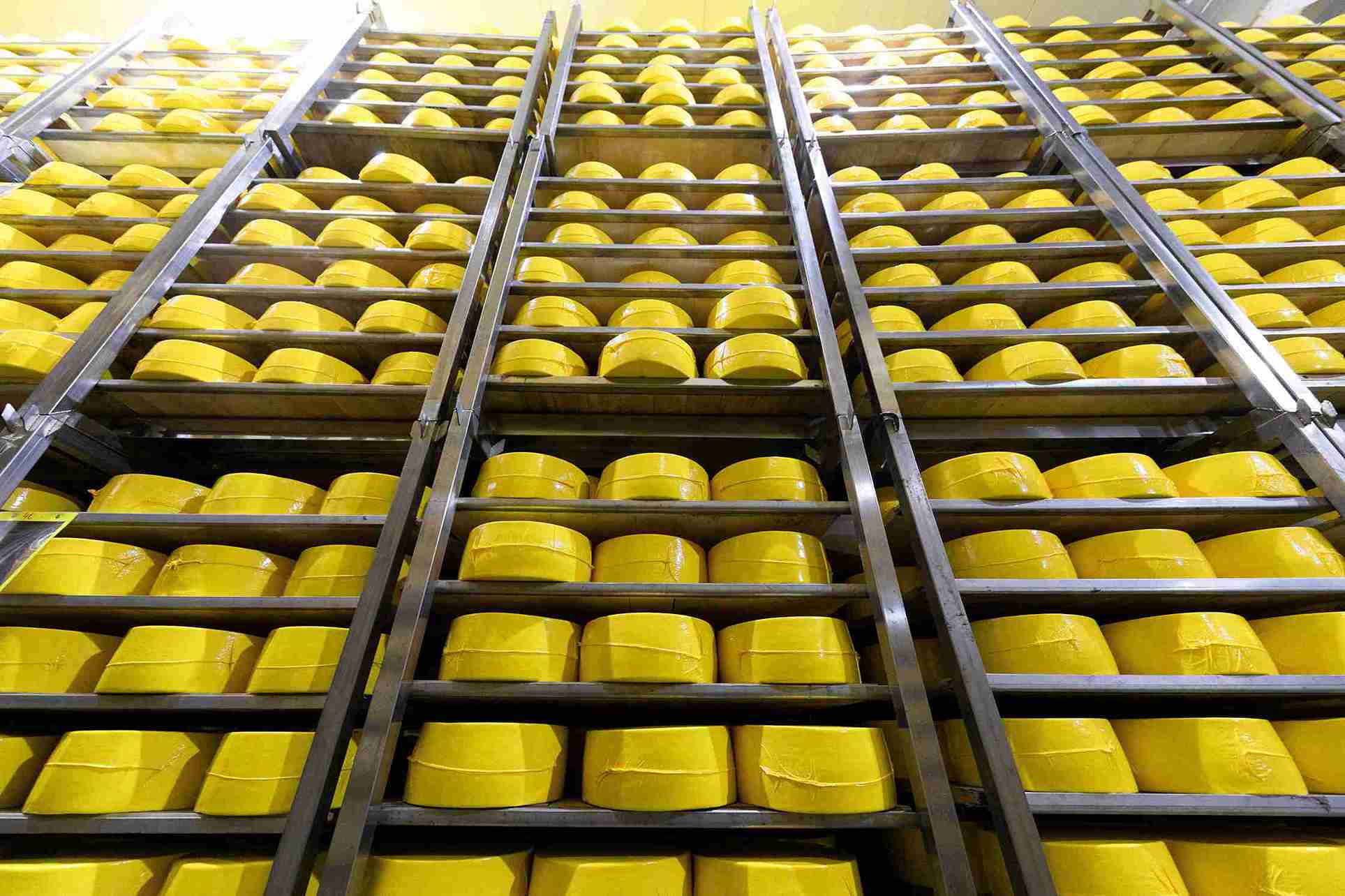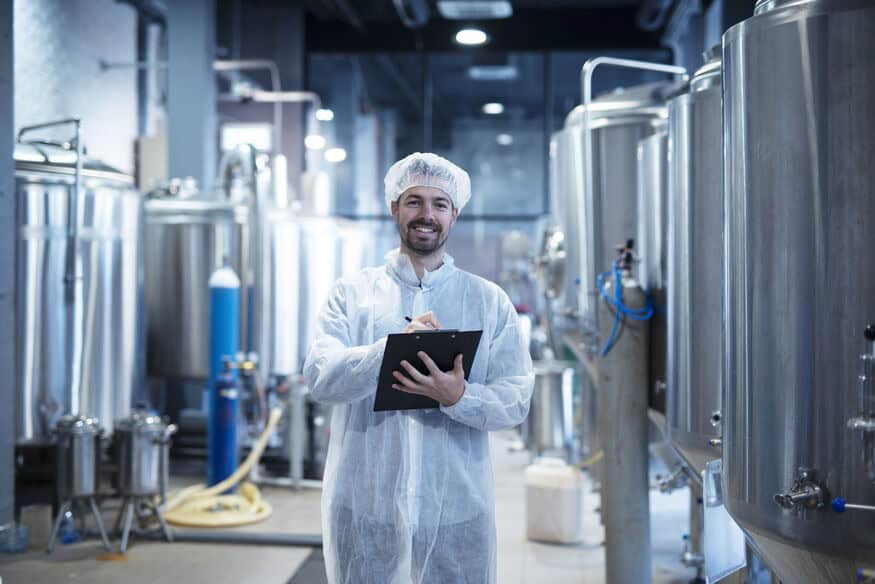Food manufacturers that monitor and reduce energy usage aren’t just saving money; they’re strategically competitive, focused on environmental sustainability, and remain compliant with various regulations. As energy costs rise and more consumers are concerned about the environment, energy efficiency isn’t just pinching pennies; it’s good business.
Whether running a small processing plant or a large production facility, the right upgrades can significantly improve your operations.
Food Manufacturing and Energy Consumption
Food manufacturing is an energy-intensive industry, accounting for 6% of total industrial emissions in the United States. Other estimates place the sector as consuming 30% of the world’s energy and generating 20% of its greenhouse gas emissions. Even if being environmentally conscious isn’t your top priority, you can see how the industry makes a big impact on the world.
Food and beverage production requires a range of equipment, including refrigeration units, ovens, water heaters, and ventilation systems. Since much of this equipment must run continuously to ensure your line stays on schedule, your energy demand increases.
If you’re running food service production, you likely already know this because you see it in your utility and overhead costs. Energy costs can account for up to 30% of a food manufacturer’s budget. Food production requires strict temperature control and an immaculately clean environment to prevent bacterial contamination. If you’re overseeing anything related to food processing and aren’t taking steps to cut your energy and operating costs, you’re going to cut into profitability. Fortunately, you can get a handle on it without sacrificing product quality (and save yourself money in the long run).
Upgrading your commercial food manufacturing equipment and processes to incorporate energy-efficient solutions results in significant savings on operational costs, benefits the environment, enables you to accomplish more in less time, and ensures compliance with the constantly evolving food safety regulations.

Knowing the Hidden Costs of Outdated Equipment
While today’s commercial appliances and equipment are often built with energy efficiency in mind, older equipment doesn’t always meet the same standards. Unless you’re running your operation with completely new equipment top to bottom, you’re likely seeing some of the drawbacks of these older machines. Older equipment can lead to:
- Higher utility bills: Older commercial food manufacturing equipment uses a lot of energy. As your production demand grows, the appliances will use more water, electricity, or gas to meet daily demands.
- Negative environmental impact: Inefficient technology produces more energy waste, emissions, and pollution.
- Frequent repairs and downtime: Older equipment is more likely to break down, causing maintenance delays that dramatically impact production rates and delivery timelines.
- Non-compliance risks: As your systems age, you are less likely to meet newer industry standards. Failure to do so may lead to operational restrictions or fines.
- Missed incentives: Many federal, state, and local incentives are available to food industry businesses to help offset the cost of upgrading equipment. Operating with outdated equipment can disqualify you from energy-saving opportunities and benefits.
In food manufacturing, there are plenty of benefits to making these smart moves toward energy-efficient equipment solutions. As your operation grows, you’ll need more than the bare minimum to keep up with demand.
Making smart upgrades helps give you a competitive advantage. You’ll lower operational costs and increase the reliability of your equipment. Yes, new doesn’t always mean better, but when it comes to food production systems, investing in the best you can afford will give you an edge over your competition.
Another persuasive argument for upgrading equipment is meeting regulatory compliance. Federal and local standards are constantly changing, but it’s essential that your equipment meets the requirements to avoid penalties or code violations.
Of course, another rationale is that adopting energy-efficient practices can also enhance your reputation as a manufacturer. Today’s consumer is more eco-conscious than ever, and they put their money behind those values. Many customers choose to spend money with companies that prioritize energy-efficient practices. Some are even willing to pay a premium (despite inflation and the rising costs of groceries).
Where an Energy-Efficient Water Heater Fits
While all your production equipment should be energy efficient, your commercial water heating equipment is particularly important.
The food production industry runs on hot water—it plays a critical role in food safety. Equipment and production areas must be kept clean and sanitary at all times to avoid food contamination and (worse) a dreaded product recall.
Hot water is also essential to create many of the consumer goods within the food and beverage industry. From cooking to cleaning, hot water is critical for a safe and productive operation.
So, should you update your water heater? There are many things to consider. Is your current water heater properly sized to meet your needs? Is it working optimally? Are you performing all necessary maintenance and upkeep to keep it in tip-top shape? Do you know the signs of water heater failure?
If you’re not sure, that’s perfectly okay. You’re the expert in manufacturing and production of food and beverages. Reliable Water Services has the experts to keep your water heater up to the task. If you suspect your water heater isn’t holding up its end of the bargain, reach out to our team to assess.
At Reliable, we cover our customers with 24/7 service and support. Our leasing and rental programs can help you get the equipment you need now, with a maintenance plan to ensure it works well into the future. You’ll have a steady supply of hot water with less strain on your other equipment and fewer worries about when your water heater will fail (an inevitability in a high-production industry like food and beverage).
Choosing the right size and type of water heater equipment will lead to some significant energy savings. You can funnel that money you save on utilities back into the business to keep fueling competitive growth.

Future Trends in Commercial Food Manufacturing Equipment
The food manufacturing industry continues to trend toward innovation, energy efficiency, sustainability, and cost control. There are a few key moves and innovations that are shaping the future of food production right before our eyes.
Here’s what to expect in the not-so-distant future:
- Smart Energy Management Systems: Tech-driven systems that track energy consumption and make real-time adjustments to optimize efficiency. For example, a smart system may reduce energy usage outside non-peak hours, or it might alert staff to performance concerns long before the equipment goes down.
- Artificial Intelligence (AI) and Automation: Like many industries, food production is trending toward optimization with the help of AI and automation. Automated equipment can speed up your line, make things safer for your workers, and help you discover inefficiencies and gaps. AI can even help you comply with food safety regulations by using cameras and sensors to monitor factors like hygiene, temperature, and production quality.
- Compact Designs: Another major cost in food production is the facility itself. Fortunately, equipment is becoming smaller, with more modular, compact footprints. Designs include built-in energy-saving features, like heat recovery and improved insulation. Scale up or scale down as needed to control energy usage.
- Variable Speed Drives: Commercial manufacturing equipment, such as conveyors, mixers, and pumps, consumes a significant amount of power to operate fixed-speed motors continuously. Variable speed control lets the equipment adjust its power usage based on demand. This is another way to help you save money during slower times while extending the equipment’s lifespan thanks to lower wear and tear.
- Decarbonization: Many manufacturers, especially in large-scale food operations, are transitioning from fossil fuels to clean energy sources. Not only does this cut back on carbon emissions, but it lowers the cost of production for both the business and the planet. Many companies are transitioning to electric or hybrid appliances that are compatible with alternative energy sources like solar or wind.
Ready to Start Saving? Let Reliable Water Services Help
If you’re ready to start cutting operational costs (and who isn’t?), one of the most challenging parts is knowing where to start. It’s easy to get overwhelmed by all the “green this” and eco-friendly that” to cut back on your energy use. Fortunately, even small steps can have a big impact.
- Start with an Energy Audit. Review your current systems to determine how much energy you use and where it may be going to waste. Use these numbers to set benchmarks and measure the success of your initiatives and upgrades against them.
- Upgrade Old Equipment. Invest in energy-efficient appliances, prioritizing older equipment with the highest overall energy consumption, such as your commercial water heater or oven.
- Train Your Team. Educate your production line on the best practices to maximize efficiency, increase safety, and keep things running smoothly.
- Invest in Automation. Automated systems track energy use and make adjustments to accommodate your needs. Automation is a time saver when it comes to tracking all your equipment and monitoring performance.
At Reliable, we know that hot water is a big part of your food production operations. Making sure your water heating equipment meets all your energy needs is a huge step in the right direction. Reach out today if you’d like us to assess your current equipment and see how it sizes up.
Preventive maintenance is also critical and can help you pinpoint issues before you hit a point of critical equipment failure. We can help you with 24/7 emergency maintenance, as well as preventative maintenance plans, to ensure that you never run into downtime because you run out of hot water.